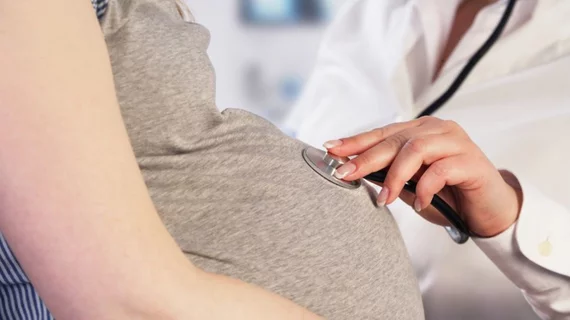CT rates up among pregnant women in US, Canada
Many more women underwent CT scans while pregnant in 2016 than in 1996, according to a new study of imaging trends in the United States and Canada.
The research, published in JAMA Network Open, included data from more than 2.2 million women from six health systems from throughout the United States and another in Ontario, Canada. Women had to be enrolled in a health system for their entire pregnancy to be eligible for the study.
Overall, CT rates among pregnant women in the United States jumped from 2.0 examinations per 1,000 pregnancies in 1996 to 9.3 examinations per 1,000 pregnancies in 2016. The rate was actually 11.4 examinations per 1,000 pregnancies in 2007, but it did drop gradually in the following years. In Ontario, the CT rate among pregnant women increased from 2.0 examinations per 1,000 pregnancies in 1996 to 6.2 examinations per 1,000 pregnancies in 2017. These findings represent a 3.7-fold increase for women in the United States and a 2.0-fold increase for women in Ontario.
“This study has given us a chance to look more closely at the use of advanced imaging in pregnancy,” Marilyn L. Kwan, PhD, co-lead author of the study and senior research scientist from the Kaiser Permanente Northern California Division of Research, said in a prepared statement. “It's important to quantify exposure to ionizing radiation because it can cause cancer and birth defects and should be kept to a minimum, especially during pregnancy.”
The researchers explored data for other modalities as well, noting that the MRI rate in the United States increased from 1 examination per 1,000 pregnancies in 1996 to 11.9 in 2016. A similar jump was observed in Ontario. Radiography rates among pregnant women more than doubled during the same timeframe in the United States and experienced a more gradual increase in Ontario.
The team also noted that, in the United States, CT, MRI and radiography rates during pregnancies were higher among black and Native American women than white women. Asian women, however, had lower CT and MRI rates than white women.
What should women take away from these findings? According to Rebecca Smith-Bindman, MD, a professor of radiology at the University of California, San Francisco School of Medicine, there may be a moment when pregnant patients need to discuss imaging options with their physician.
“Always, but especially if you're pregnant, you should ask whether it is really medically necessary to have any imaging test that involves ionizing radiation,” Smith-Bindman, a senior author of this study, said in the same statement. “If advanced imaging is needed, ask your doctor if you can have another imaging test that doesn't involve exposure to ionizing radiation, such as MRI or ultrasound.”

